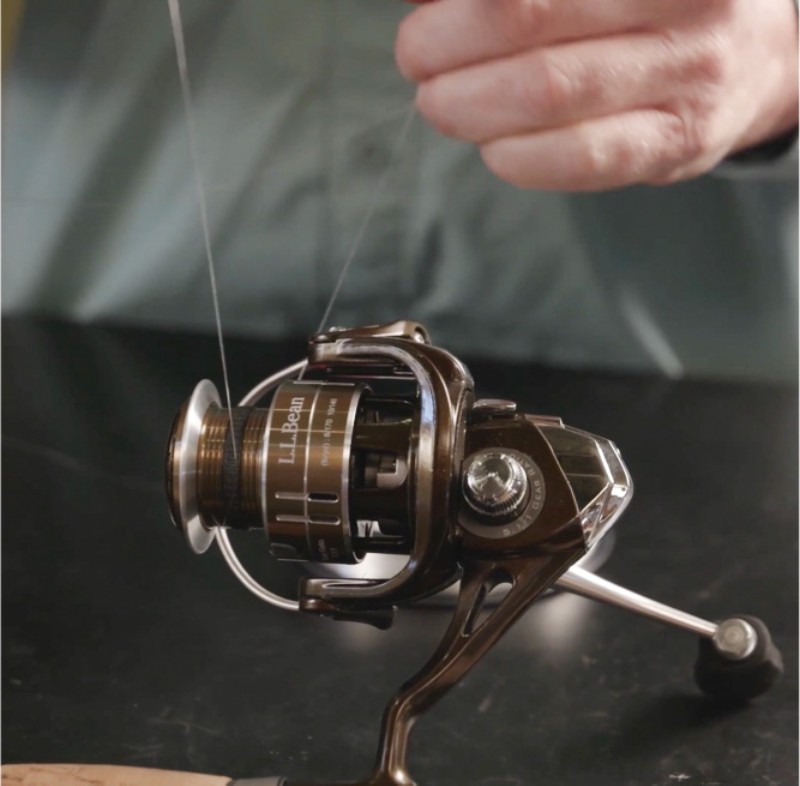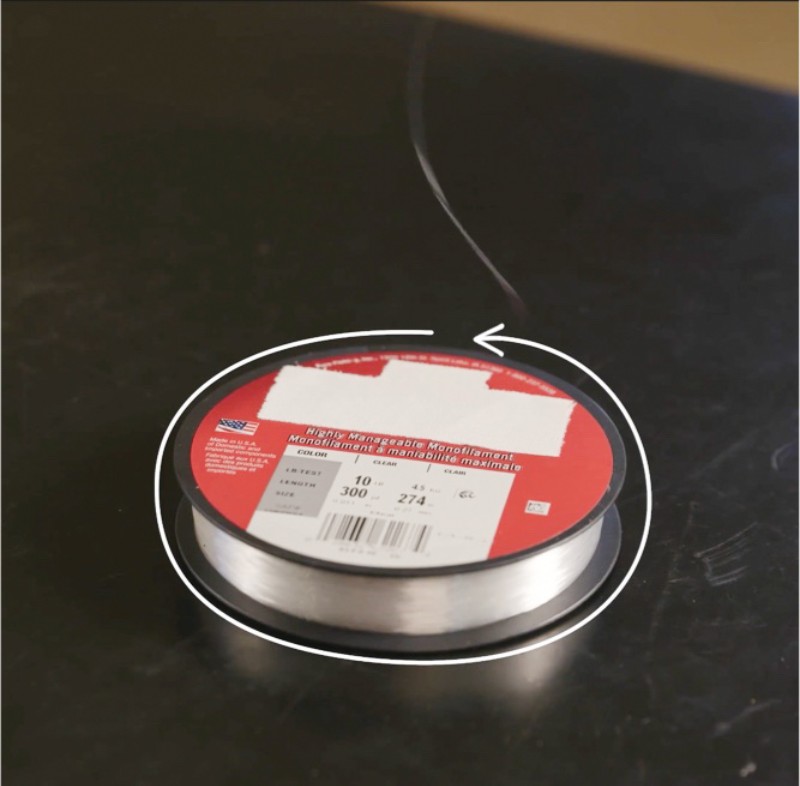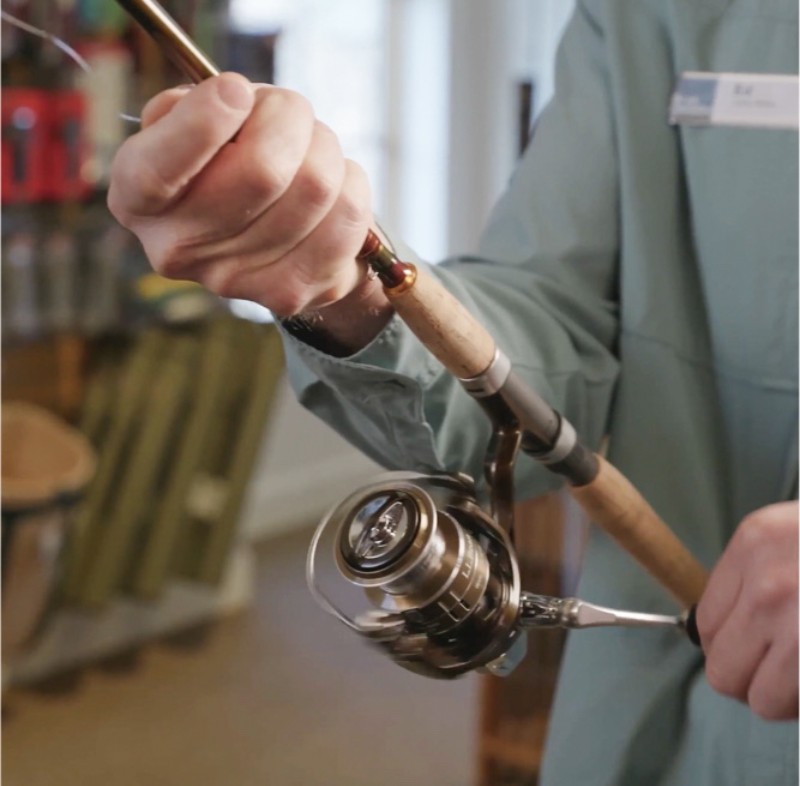[00:00:00.11] Hi, Ed here. I'm the associate store manager of the L.L.Bean hunting and fishing store in Freeport, Maine. And I'm going to show you how to rig up your spinning reel. First step is to make sure the line matches the size of the reel. You can find that information on the reel spool. For this reel, we're going to put on 140 yards of 10-pound test line.
[00:00:19.29] Next, you need to attach the line to the spool. Open the bail of the reel, run the line through the guide on the rod, and then tie the line to the spool using the arbor knot. The arbor knot is tied like this. Loop the end of the line around the spool 2 times, and tie a simple overhand knot near the end.
[00:00:35.97] [MUSIC PLAYING]
[00:00:41.36] Trim the excess.
[00:00:42.99] [MUSIC PLAYING]
[00:00:46.76] Loop this end around the main line and tie another overhand knot and tighten. Now pull on the main line and cinch it down, so the 2 overhand knots are together. This is the critical step. You need to make sure the line is coming off the spool of monofilament correctly. If it's not, then you'll have all kinds of trouble with twisting and tangling.
[00:01:07.09] When you go fishing, place a spool on the table, so the line comes off in a counterclockwise direction. This ensures the line goes on your reel spool the same way it comes off the bulk spool, preventing tangle causing twist. Fortunately, for most line manufacturers, this means the spool is lying with the label facing up.
[00:01:26.67] Hold the line between your fingers and start reeling the line onto the reel. Don't reel too fast or you might burn your fingers. Apply tension, but you don't need to hold it too tight. Fill the spool within one-eighth-inch of the top of the spool. If you overfill, the line could spill off the spool uncontrollably. And now you're ready to go fishing.
[00:01:50.79] Tell us what kind of fish you like to go after in the comments below. Also, let us know what kind of videos you'd like to see more of. And don't forget to like and subscribe so you don't miss our next video. For more fishing tips and inspiration, visit Explore L.L.Bean at llbean.com/explore.

STEP 1: MATCH THE LINE TO THE SIZE OF THE REEL
You can find that information on the reel spool. For example, the reel shown here will hold 200 yards of 10-pound test monofilament.

STEP 2: ATTACH THE LINE TO THE SPOOL
Start with the reel mounted to the butt section of a rod. Next, open the bail on the reel. Run the line through the first guide on the rod and then tie the line to the spool using an arbor knot.

STEP 3: MAKE SURE THE LINE IS COMING OFF THE BULK SPOOL CORRECTLY
Place the bulk spool on the floor so the line comes off in a counterclockwise direction. This ensures the line goes on your reel’s spool the same way it comes off the bulk spool, preventing tangle-causing twist. For most line manufacturers, this means the bulk spool is lying with the label facing up.

STEP 4: INSTALL THE LINE ONTO THE REEL
Hold the line between your fingers and start reeling the line onto the reel. Don’t reel too fast or you might burn your fingers. Apply tension but you don’t need to hold it too tight. Fill the spool to within 1/8” of the top of the spool. If you overfill, the line could spill off the spool uncontrollably when you try to fish.
Now it's time to go hit the water and catch some fish! Get outfitted with everything you need for your next fishing adventure.


